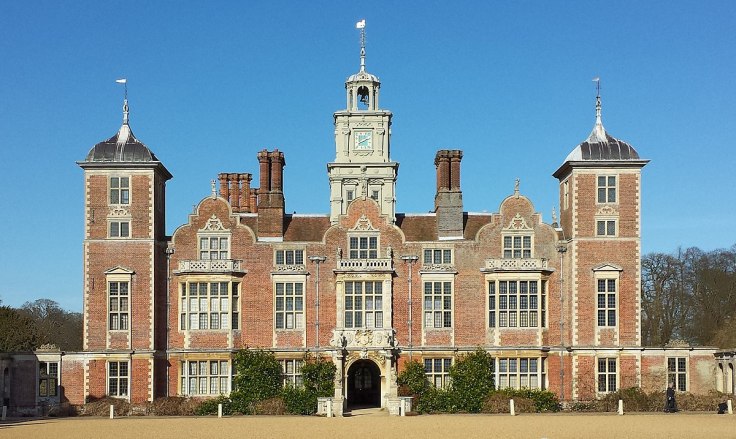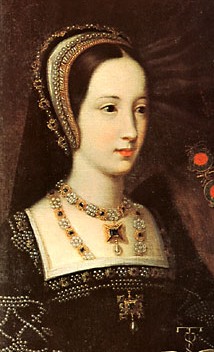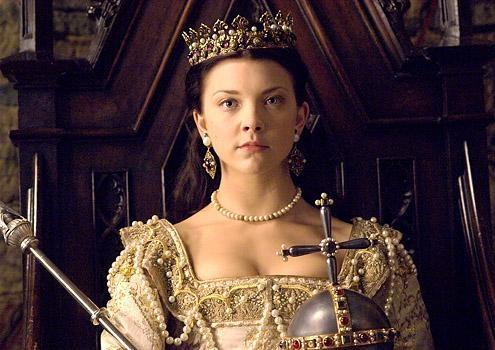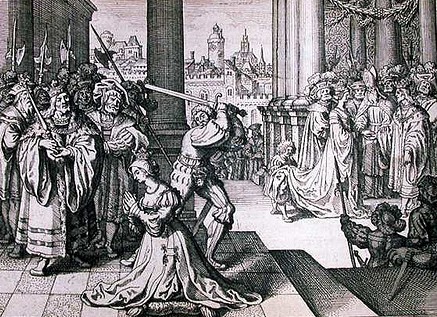Anne Boleyn is probably one of the most famous queens in history. With her ‘B’ necklace, long dark hair, and piercing dark eyes she is instantly recognizable. But how did she get to be the queen consort? And what led to her downfall? Both are questions I hope to answer in this blog: Who was Anne Boleyn?

Birth:
The exact birthdate of Anne Boleyn is unknown but popular opinion says that she was born in 1501 or 1502 (although some historians argue it could have been as late as 1507). The exact location of Anne’s birth remains unknown as well but she was probably born at Blickling Hall in Norfolk. She was born to father Sir Thomas Boleyn (who was, at that time, a minor courtier) and mother Elizabeth Howard. Elizabeth was the daughter of the second Duke of Norfolk. The two surviving siblings of Anne Boleyn were Mary and George, whose birth date and birth locations are also unknown, what is known is that the Boleyn siblings were close in age.

Teen – early adulthood:
In 1514 King Henry VIII married his younger sister Mary to the aged King of France. Anne accompanied Mary to France and chose to remain there even after the King had died and Mary returned home. She was educated in France and became an accomplished musician, singer, and dancer.
First Years Back at Court:
Anne returned home to England in 1521 or 22 with the war between England and France being imminent. She then returned to court where she had many admirers, one admirer even being the king. The king was first attracted to her sister, Mary. Mary was his mistress in the early 1520’s, but he eventually lost interest. At court, Anne was popular among the men, despite the fact that she was not of “traditional beauty” and was able to draw in admirers (including Henry) with her wit and style.
The Venetian Ambassador described Anne in 1532 as “She is of middling stature, with a swarthy complexion, long neck, wide mouth, bosom not much raised, and in fact has nothing but the King’s great appetite, and her eyes, which are black and beautiful – and take great effect on those who served the Queen when she was on the throne. She lives like a queen, and the King accompanies her to Mass – and everywhere.”
Anne spent her first years back at court serving Queen Catherine of Aragon as a lady-in-waiting. Anne avoided and teased Henry and his love for Anne grew stronger because what he couldn’t have he wanted more. He was used to getting what he wants and having his way in everything that he found himself completely enthralled with Anne. At this time she was to marry Lord Henry Percy but it was prevented by Cardinal Wolsey on Henry’s order. She blamed the Cardinal for this and hated him for it.
In 1527 Henry started secret proceedings to get an annulment from his wife Catherine. For six years Pope Clement VII refused to grant the annulment, all while Henry’s desire for Anne grew stronger. Henry split from the Catholic Church and made the Church of England. On January 25, 1533, Henry and Anne were secretly married. And the marriage was announced to the public on Easter of that year. On May 23 Henry had The Archbishop of Canterbury Thomas Cranmer pronounce his marriage to Catherine null and void.

Queen:
When Anne was finally queen she chose her motto to be “The Most Happy” and replaced Catherine’s badge of pomegranates with her own Falcon symbol. Anne entered confinement in late August 1533 and gave birth to Elizabeth on September 7 of that year. After Elizabeth’s christening, Henry wrote to Mary that she needed to give up her title of Princess of Wales and recognize Anne as Queen and Elizabeth as the rightful heir to the throne. When she refused, she was evicted from her home. And in December she went to serve Elizabeth. Anne and Henry eventually tried a gentler course with Mary and tried to make her see that she had brought Henry’s displeasure upon herself and they would be more than happy to receive her. Anne even made arrangements to see Mary and invite her back to court. Mary responded by saying, “I know no Queen in England but my mother. But if you, Madam, as my father’s mistress, will intercede for me with him, I should be grateful.” Anne left in a rage and never tried to make friends with her again.
In April 1534 Anne announced that she was pregnant again and, sometime later, unfortunately, had a miscarriage. And later that year in September 1534 she miscarried a 6-month-old fetus. It was old enough for the features to be seen it was a boy. Henry and Anne were disappointed. Anne was also angry because Henry had begun an affair over the summer, when she confronted him he said, “You have good reason to be content with what I have done for you – and I would not do it again if the thing were to begin. Consider from what you have come.” Henry continued his liaisons and Anne continued to be disappointed and devastated. This was not good for her mental or physical health but fortunately, by December of 1534, she and Henry had made up again.

Fall from grace, trial, and execution:
As Henry’s health began to worsen he became impotent due to the fact that he was in his mid-forties and increasingly obese. Anne and his mistresses were not able to conceive. Desperate for a son he blamed it on his wife, Anne. He had been in an adulterous relationship with Jane Seymour (one of Anne’s ladies-in-waiting). And it must have occurred to the King that if he got rid of Anne, like Catherine, that he could try again for another heir to the throne, the son he always wanted.
There was nothing that could be done to save Anne once the investigation was underway. Anne was accused of several affairs with male members of the court (some were tortured to make confessions), incest with her own brother George, and the use of sorcery to bewitch the king. She was sent to confinement in the Tower of London and her trial took place on May 15, 1536. The sentence was read out by her uncle Thomas Howard. She was either to burn at the stake or be beheaded, at the King’s discretion.
On May 17 George Boleyn and four other men convicted of adultery with Anne were executed by beheading. Anne knew her time was coming and she was told that a special swordsman was being brought in from France. She was assured that there would be no pain and then she said the famous line, “I have heard that the executioner is very good. And I have a little neck”. Anne’s marriage to the king was declared invalid. And on the morning on the 19th of May Anne was escorted to the Tower Green where she made a short speech.
“Good Christian people, I am come hither to die, for according to the law, and by the law I am judged to die, and therefore I will speak nothing against it. I am come hither to accuse no man, nor to speak anything of that, whereof I am accused and condemned to die, but I pray God save the king and send him long to reign over you, for a gentler nor a more merciful prince was there never: and to me he was ever a good, a gentle and sovereign lord. And if any person will meddle of my cause, I require them to judge the best. And thus I take my leave of the world and of you all, and I heartily desire you all to pray for me. O Lord have mercy on me, to God I commend my soul.”
She removed her headdress and her ladies tied a blindfold over her eyes. She then kneeled down and repeated several times “To Jesus Christ, I commend my soul; Lord Jesus receive my soul”. The executioner cut off her head in one stroke. Her body and head were put in a chest and in an unmarked grave in the Chapel of St. Peter ad Vincula. During the renovations by Queen Victoria, she was identified and her resting place is now marked on the marble floor of the chapel.
I think it is also worth mentioning the Poem “Oh Death Rock Me Asleep” which is thought to be written by Anne while she was in the tower. The poem goes as follows:
O death! rock me asleep,
Bring me on quiet rest;
Yet pass my guiltless ghost
Out of my careful breast:
Toll on the passing bell,
Ring out the doleful knell,
Let the sound of my death tell,
For I must die,
There is no remedy,
For now I die
My pains who can express?
Alas! they are so strong,
My dolor will not suffer strength
My life for to prolong:
Toll on the passing bell,
Ring out the doleful knell,
Let the sound of my death tell,
For I must die,
There is no remedy,
For now I die
Alone, in prison strong,
I wail my destiny,
Wo worth this cruel hap that I
Should taste this misery:
Toll on the passing bell,
Ring out the doleful knell,
Let the sound of my death tell,
For I must die,
There is no remedy,
For now I die
Farewell my pleasures past,
Welcome my present pain;
I feel my torments so increase
That life cannot remain.
Cease now the passing bell,
Rung is my doleful knell,
For the sound my death doth tell,
Death doth draw nigh,
Sound my end dolefully,
For now I die.
Thank you for reading! I hope you enjoyed! If there is anything you think I left out please leave it in the comments below! Have a nice day! 🙂

Leave a comment